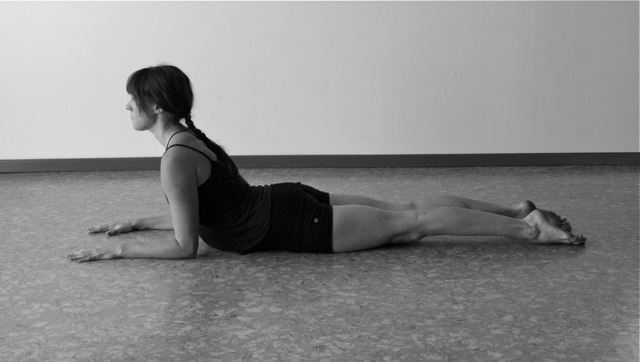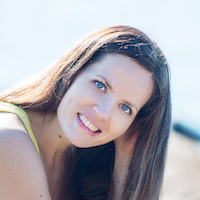As I sit among the 100 others and hum my oms after what feels like a bone-stretching Yin workshop, I contemplate its power.
After a yang-style yoga practice (something more active, like ashtanga), my body feels strong, my muscles are activated, pumped up and flexed. My mind is at peace because it found solace in the movement of my body.
There is a balance between the Yin and the Yang, activity and stillness.
After a Yin practice, though, my body feels weak and frail. Even my mind is weepy.
I move out of the poses with the slowness of an 80-year old, and cannot help but moan.
Breathe towards the legs, ground your energy, speaks the teacher—and I feel so vulnerable.
The Not-so-Quiet Yin
Did you ever think of Yin yoga as relaxed, slow and easy? Think again.
There is nothing easy in the stillness of the body—at least for me, it is quite the contrary. This may be because when we practice Yin yoga, the body is still so the mind has space to roam.
My mind starts thinking thoughts, planning life, identifying with the (sometimes insufferable) pain we feel in parts of our body. It wonders if my toes are going to fall off, while my ego is already somewhere shattered on my mat. When the body is still, the yang energy is there—it is trying to escape, trying to rise to the head generating thoughts, trying to push through the skin making us warm.
As my teacher said, if you cannot guide this yang energy, it will be wasted.
We need to learn to ground this energy, to send it down, push it to the center to find balance.
Staying in a pose is not so much about the body and its sensations—it’s more about managing our emotions while we are there. Yin yoga reminds us to preserve our energy, to direct and guide the yang energy that arises when the body is still.
We have so much yang, and we need it—to get us out of bed, to get us moving around so that we can live life.
But when we waste this energy, we tend to consume more than we restore.
The Emotional Side of Yin
Emotions seem to be the word of the day for me. Time and time again I enter my limits, and slowly exceed them. I open my body to degrees it has never been opened to before, and I become soft like the water. Or, at least I try to. Soft like the water, solid like a tree; rooted in my intentions, unaffected by the external circumstances. Promising myself to be there, to catch myself, to see myself through. Solid like the earth, but open within for new things to grow.
I try to be the reservoir of energy, the container, as we are told.
When I return from my edges, slowly, all I want to do is run home and hide from the world, lick my wounds. I don’t know what those wounds are, I don’t know in which box to place my emotions, all I know is I feel emotional and frail. Like something has been moved so deep within me it goes beyond words and explanations.
I want to cry, because it feels like I have just undergone something worth crying about. Release from stress maybe, or more likely a safe return from places unknown and new.
Like a baby crying over new experiences, I go back to the beginning and cry, too.
So Why Do We Do It?
With yang style yoga we get to add on more layers, layers of strength, layers of muscles, layers to move us forward and upward.
In Yin, maybe these layers are being removed. We go back to the beginning of times, we try to get deeper into the tissues that have long been forgotten and start to nurture ourselves from there.
This requires openness and willingness to sit still in whatever may come.
I am not very good at being open or vulnerable. I’ve learned to take on the role of strength and independence in life, the motto was to plow through and not managing was never an option. I forgot how to be soft, how to hold myself open.
Yet this exactly is my fascination with Yin.
In its essence, yin cultivates the greatest of strengths: the ability to go further despite fear; the courage to face what comes; the ability to remain openly weak. During practice, when time has stopped existing, the bell should have rung a lifetime ago, but there we are, still in the pose—it’s down to me, and me alone.
A kind assistant comes around to sooth me every once in a while, to move me further or adjust my feet, but I know it will not help.
This is my journey, and I’m left to fend for myself.
Searching for Freedom
In yoga we are ultimately looking for freedom—freedom of movement, maximum range of motion, freedom from identification with our thoughts. Our teacher tells us how we must first understand freedom with the body, since freedom does not only belong to the mind.
In fact, there is no separation in movement and stillness, they exist in each other.
Whether we try to meditate in stillness, or move to quiet the mind, it’s our task to understand this union of yin and yang, thereby finding our center.
I arrive again and again in search of my freedom. I stretch beyond my yesterday’s limits in search of my roots. And I cry, as I inch my way closer to my center.
Author: Kaisa Kapanen
Apprentice Editor: Alicia Wozniak / Editor: Renée Picard
Photo: Bernie Clark/Christy Collins at Wiki Commons


 Share on bsky
Share on bsky





Read 3 comments and reply